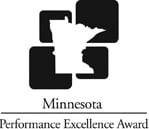Physical fitness is an important part of a healthy lifestyle, especially as we age. Regular exercise can tone muscles, increase circulation, and even slow the effects of aging. Yet it can be challenging for older adults to find exercises that feel appropriate. That's why FIT Functional Fitness® is so exciting.
FIT Functional Fitness® isn't about heavy lifting, it's about improving quality of life while encouraging physical activity. It's also a great way to have some fun!
WHAT IS FIT FUNCTIONAL FITNESS?
The Goodman Group’s progressive, individualized fitness program emphasizes core strength and balance. The goal is to increase overall health and well-being, reduce the potential for falls, and encourage older adults to remain active. Where possible, the program can reduce the need for assistive mobility devices. According to the Centers for Disease Control and Prevention, frequent exercise can help relieve arthritis pain and lower the risk of type 2 diabetes.
FIT Functional Fitness® incorporates specialized fitness programs, taking current health levels into consideration and allowing all residents to participate, no matter their current functional fitness level. As the participants’ strength and endurance increase, residents may choose to progress to the other programs offered.
HOW TO GET STARTED
Before starting any exercise program, here are some general recommendations to bear in mind from the National Institute on Aging:
- First, always check with your doctor before starting an exercise program.
- Reduce or suspend exercise if you’re injured, sick, or have a fever.
- Always warm up before and cool down after exercise.
- Drink plenty of water before, during and after exercise.
- Avoid heavy meals before exercise.
- If you feel significant fatigue or discomfort after working out, cut back a little the next time you exercise. What works one day may be different the next, so don’t be surprised if you’re not doing the same level of exercise every day. If, however, your fatigue or discomfort is extreme, it is best to see your doctor as a precaution.
Participate in a fitness program that customizes activities based on your specific needs such as your fitness level, overall health and fitness goals. It should especially take into consideration any physical restrictions you may have, whether they are short- or long-term.
FUNCTIONAL FITNESS EXERCISES
The National Institute on Aging also recommends functional fitness exercises that support four fitness goals for seniors: endurance, strength, balance and flexibility. Many exercises and activities can address all four goals combined. Plus, most exercises work together to reinforce each other’s benefits. Many functional fitness exercises can be incorporated into your daily activities. Here are four of the most effective.
Walking
Walking is possibly the single best exercise for seniors—or anyone, really. Walking addresses all four types of functional fitness goals.It strengthens major muscle groups and supports endurance, balance and flexibility. And it can be done anywhere! Take a walk around the mall or through a park. Bring a friend or walk alone. Try to get out every day, even if it’s for 10 minutes.
Climbing Stairs
Climbing stairs are great for strengthening your legs, maintaining flexibility in the hip and knee joints, and even building or maintaining cardiac endurance. For most of us, stairs are pretty available and convenient to use. If mobility allows, skip the elevator the next time you visit the doctor, a friend, or the mall, and take the stairs instead.
Sit to Stand
Also called a chair squat, this exercise is simple and easy to do. You can do it every time you sit down, whether to eat, play cards, watch TV, or engage in any other seated activity. Begin by standing in front of your chair, and then sit as you normally would. However, before you actually touch the chair or transfer weight to it, stand up again. Repeat several times.
Wall Push-Ups
This exercise improves upper body strength, especially in your arms and chest. Stand slightly less than arm’s length from the wall, close enough to place your palms flat on the wall. Keeping your body straight, bend your elbows and lean forward toward the wall. Then press away from the wall to your starting position. The closer you are to the wall, the easier the exercise will be. Start closer and work yourself farther away as you’re able.
OTHER EXERCISES TO DO AT HOME
Working a fitness routine into your daily life can be a challenge. To help make it easier, try using any of the stay-at-home exercise programs available through TV stations—PBS, for example—or YouTube. In addition, there are many exercise DVDs you can check out from your local library or buy from the store, too.
You can also “get smart” about it. Apps like Yoga Exercises for Seniors and many others designed for seniors can guide you through simple movements to maintain flexibility and strength.
TAKE A CLASS AT A COMMUNITY CENTER
If you prefer getting out of the house, community centers are great resources for affordable fitness classes that cater to all ages. Many centers offer classes designed specifically for seniors and some even have swimming pools, which can be a great way to exercise, too.
Swimming is a great cardiovascular exercise that puts very little stress on your joints. For that reason, it is a fantastic exercise for seniors. Keep in mind that swimming doesn't help build bone density. You'll want to engage in weight-bearing exercises, like a stationary bike or light-weight resistance training, in addition to swimming.
USE VARIETY AND MOTIVATION TO KEEP YOU GOING
A key to maintaining good health year-round is to practice a variety of exercises. Try an aerobics DVD Monday, a yoga class Wednesday, and a walk around the neighborhood with a friend on Saturday.
Maintaining motivation is also key. If you're concerned about staying committed to your workout regimen, find a fitness friend. This will help hold you accountable as well as function as an excuse to see your friend. Plus, the added encouragement is always nice!
PHYSICAL BENEFITS OF FUNCTIONAL FITNESS
Functional fitness targets four key areas that help keep us healthy and active as we age:
- Strength—Building and maintaining muscle strength and function
- Flexibility—Keeping joints and muscles supple and moving with ease
- Endurance—Sustaining movement that improves cardiovascular health
- Balance—Staying secure and strong on our feet helping to prevent falls
Functional fitness can even benefit your ability to do activities of daily living (ADLs) such as bathing, dressing, preparing meals, getting out of bed, shopping and driving. As you build strength, daily tasks such as these become easier to complete independently.
EMOTIONAL BENEFITS OF FUNCTIONAL FITNESS
Physical fitness is important for good health at any age, but what about the emotional benefits of physical fitness? The National Institute on Aging says there are also many emotional benefits to staying functionally fit. Here are four that stand out.
- Social Engagement. While you don’t have to work out with an exercise buddy or in a group class, most physical activities will involve some social interaction—even if it’s just saying “hello” as you pass someone on the same walking path. Social interactions, even if brief, may boost the immune system and your mood—contributing to an overall sense of improved well-being and happiness.
- Mental Acuity. Exercising can help your mental health, too. Regular exercise helps you maintain focus and readily switch between tasks like answering a call from the doctor’s office right in the middle of planning your day. Staying mentally sharp is even more important as we age and is a contributing factor to one’s overall level of engagement.
- Self-Confidence. Staying physically and mentally fit can increase your self-confidence. Knowing that you’re able to manage day-to-day activities like driving, shopping, or cooking is an important factor in maintaining a positive attitude. That, in turn, tends to increase your overall level of happiness and sense of purpose in life.
- Independence. When you're fit and confident, you can rely on your own independence. Feelings of strength and independence are major factors in maintaining a high quality of life for seniors. They ensure that you have control over your own life situation, even as changes may arise. It also increases self-esteem and self-confidence, creating a positive cycle of reinforcement.
SEEING RESULTS
We continue to hear from our residents how much fun they have with each other in our FIT Functional Fitness® classes, which is why they come to classes time and again.
We have residents who shared that after participating in FIT Functional Fitness® classes, they’re able to do things they couldn’t before like go on outings, climb stairs, get into vehicles, and enjoy a walk around the lake. Most importantly, they’re able to enjoy moments with their loved ones that they couldn’t in the past.

